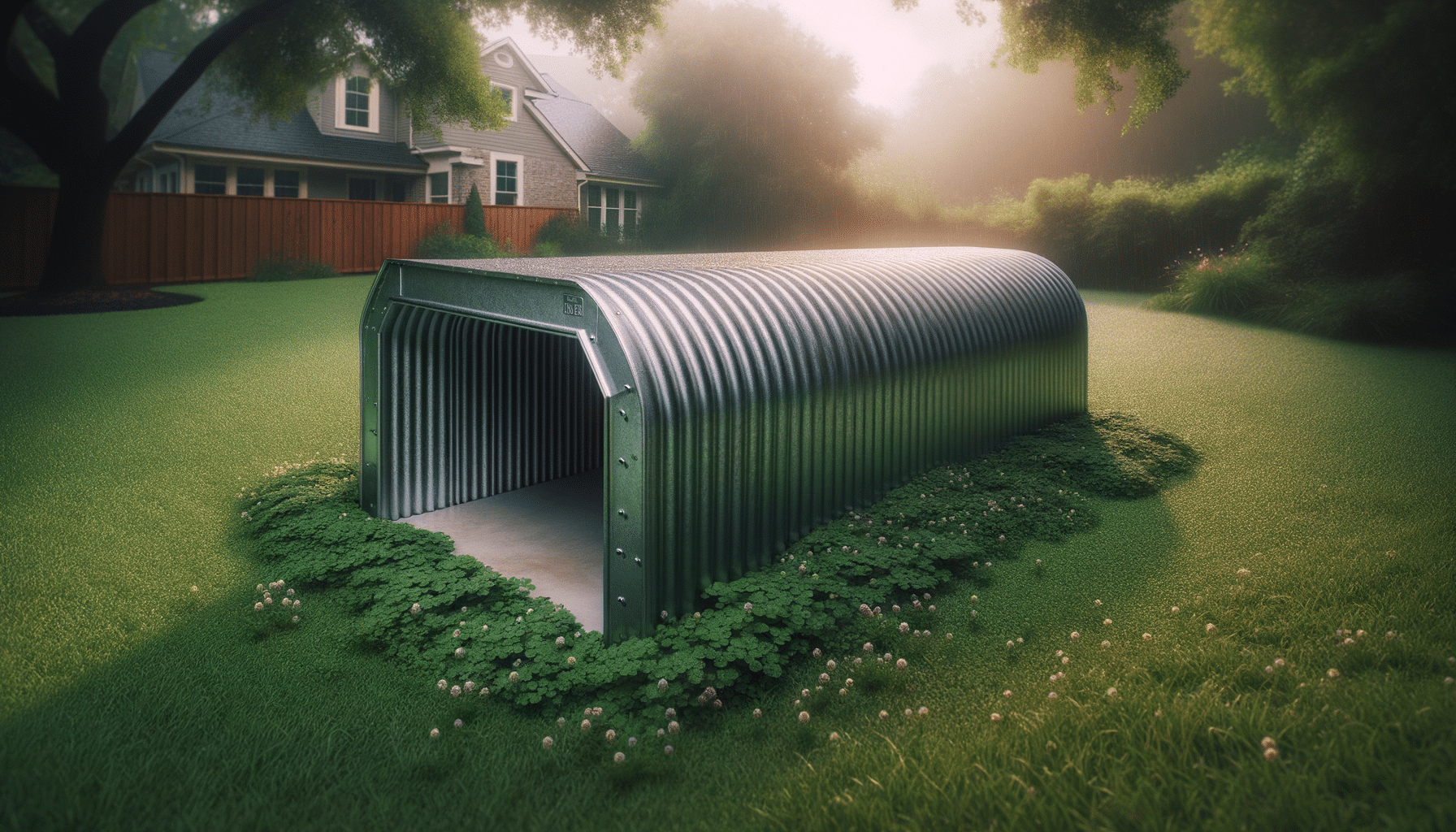
Affordable Storm Shelters Guide
Understanding the Need for Storm Shelters
When severe weather strikes, especially in regions prone to tornadoes and hurricanes, having a reliable storm shelter can be a critical factor in ensuring personal safety. The increasing unpredictability of weather patterns makes it more important than ever to have a secure place to retreat. Storm shelters are specially designed structures that provide a safe haven during extreme weather events, protecting you from winds, flying debris, and other hazards. They are built to withstand the harshest conditions, offering peace of mind and security.
Several factors contribute to the necessity of storm shelters. First, the frequency and intensity of storms have been rising, compelling homeowners to consider protective measures. Second, traditional homes often lack the structural integrity to withstand powerful storms, making dedicated shelters a prudent investment. Lastly, the psychological comfort of knowing there is a designated safe space can significantly reduce anxiety during storm seasons.
Key benefits of storm shelters include:
- Enhanced protection against extreme weather conditions.
- Increased property value by adding a desirable safety feature.
- Potential insurance discounts for having a certified shelter.
In summary, storm shelters are not just a luxury but a necessity for those living in storm-prone areas. They offer a tangible solution to the threats posed by severe weather, ensuring the safety of you and your loved ones.
Types of Storm Shelters
Storm shelters come in various forms, each designed to meet specific needs and preferences. The primary types include underground shelters, above-ground safe rooms, and community shelters. Each type has its unique advantages and considerations, making it essential to choose the right fit for your circumstances.
Underground shelters are often considered the traditional option. They are typically installed beneath a building or in the yard and provide excellent protection against tornadoes. These shelters are favored for their ability to offer maximum safety, as they are less likely to be impacted by high winds and debris. However, they may not be suitable for areas with high water tables or flooding issues.
Above-ground safe rooms, on the other hand, offer more accessibility and convenience. They can be installed inside your home or garage and are built to FEMA standards to ensure safety. These shelters are particularly beneficial for those who may have mobility issues, as they eliminate the need to descend stairs or ladders. While they might be more expensive than underground options, their accessibility and ease of use make them a popular choice.
Community shelters are larger facilities intended for use by multiple families or groups. They are often located in public buildings or community centers and provide a shared space for safety during storms. These shelters are ideal for areas with high population densities where individual shelters may not be feasible.
Choosing the right type of storm shelter involves considering factors like budget, space, accessibility, and specific regional weather threats. Each type offers distinct advantages, ensuring there is a suitable option for everyone.
Materials and Construction Considerations
The construction materials and methods used in storm shelters significantly impact their effectiveness and durability. Common materials include steel, concrete, and fiberglass, each offering unique benefits and challenges. Understanding these options can help you make an informed decision about your storm shelter investment.
Steel shelters are known for their strength and resilience. They are often used in above-ground safe rooms due to their ability to withstand high winds and flying debris. Steel shelters are also relatively quick to install and can be customized to fit various spaces. However, they may be susceptible to rust if not properly maintained, especially in humid climates.
Concrete is another popular choice, particularly for underground shelters. It provides excellent protection and can be designed to blend seamlessly with the surrounding environment. Concrete shelters are highly durable, offering long-term safety with minimal maintenance. The primary drawback is their weight and the need for professional installation, which can increase costs.
Fiberglass shelters offer a lightweight alternative to steel and concrete. They are resistant to corrosion and can be installed quickly, making them a convenient option. However, they may not provide the same level of protection as heavier materials and are often used in areas with less severe weather threats.
When considering construction, it is also essential to ensure that the shelter meets safety standards set by organizations like FEMA. Proper ventilation, emergency supplies, and communication tools are also critical components of a well-prepared storm shelter.
Cost-Effective Solutions and Financing
Investing in a storm shelter does not have to break the bank. Several cost-effective solutions and financing options can make these life-saving structures accessible to more families. Understanding these options can help you secure a storm shelter without financial strain.
One approach to reducing costs is to consider pre-fabricated shelters. These units are manufactured off-site and delivered ready to install, often resulting in lower labor costs. Additionally, smaller shelters or those with fewer features can provide essential protection at a reduced price.
Government programs and grants are also available in some areas to help offset the costs of storm shelters. These initiatives aim to encourage homeowners to invest in safety measures, reducing the overall impact of severe weather events on communities. Checking with local authorities can provide information on eligibility and application processes for these funds.
Financing options such as loans or payment plans offered by shelter manufacturers can also make the investment more manageable. These plans allow homeowners to spread the cost over time, making it easier to budget for a shelter.
Another consideration is the potential for insurance discounts. Some insurance companies offer reduced premiums for homes with certified storm shelters, providing a financial incentive for safety investments.
By exploring these cost-effective solutions and financing options, homeowners can find a storm shelter that fits their budget while providing essential protection.
Installation and Maintenance Tips
Proper installation and maintenance are crucial to ensure the effectiveness and longevity of storm shelters. Whether you choose an underground or above-ground option, following best practices can help maximize safety and performance.
For installation, it is advisable to consult with professionals who specialize in storm shelters. They can assess your property and recommend the best location and type of shelter for your needs. Proper installation is critical, especially for underground shelters, to prevent issues like water leakage or structural instability.
Once installed, regular maintenance is necessary to ensure the shelter remains in optimal condition. This includes checking for signs of wear or damage, such as rust on steel shelters or cracks in concrete. Ensuring that doors and locks function correctly is also essential for safety.
Emergency supplies should be stored in the shelter, including water, non-perishable food, flashlights, and a first aid kit. Regularly updating these supplies and checking expiration dates is important to ensure readiness during an emergency.
Finally, conducting periodic drills with your family can help ensure everyone knows how to access the shelter quickly and efficiently. Practicing emergency procedures can reduce panic and confusion during an actual storm event.
By following these installation and maintenance tips, you can ensure that your storm shelter provides reliable protection when you need it most.


